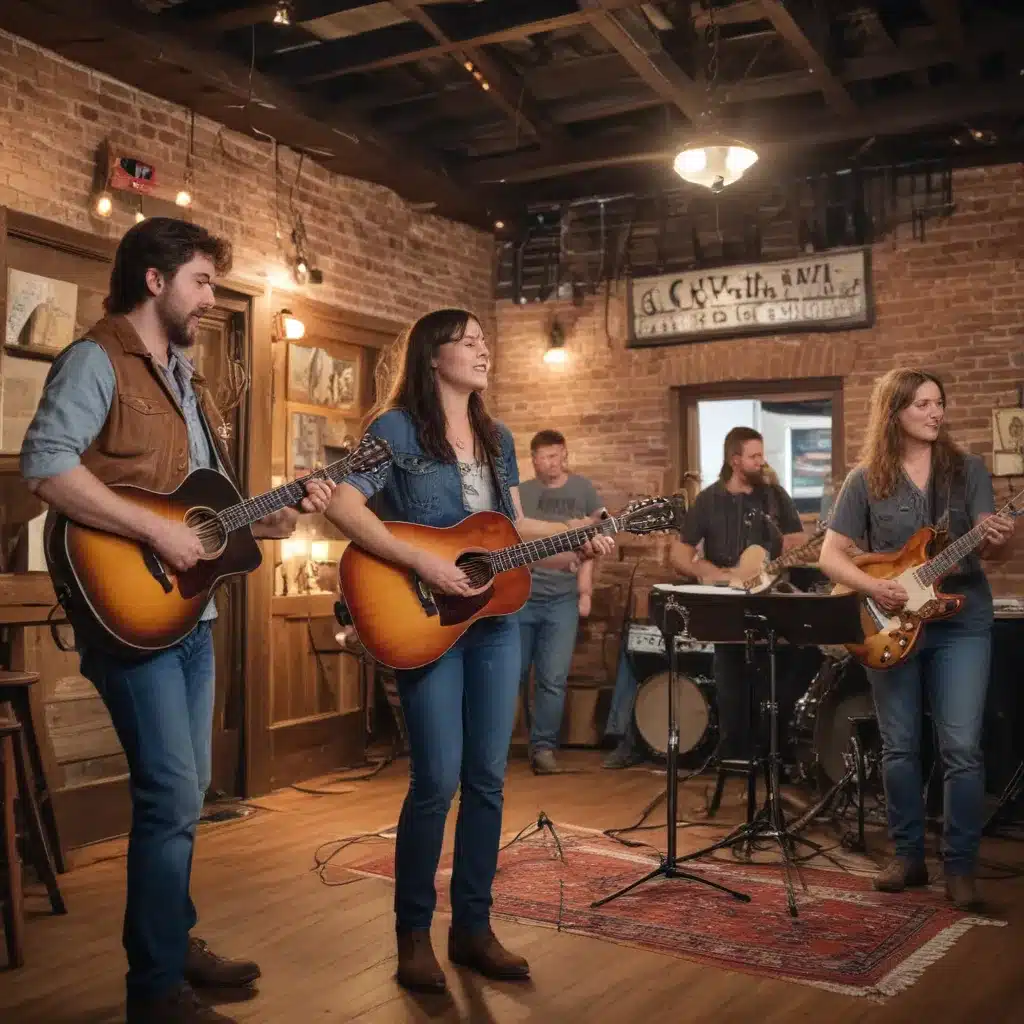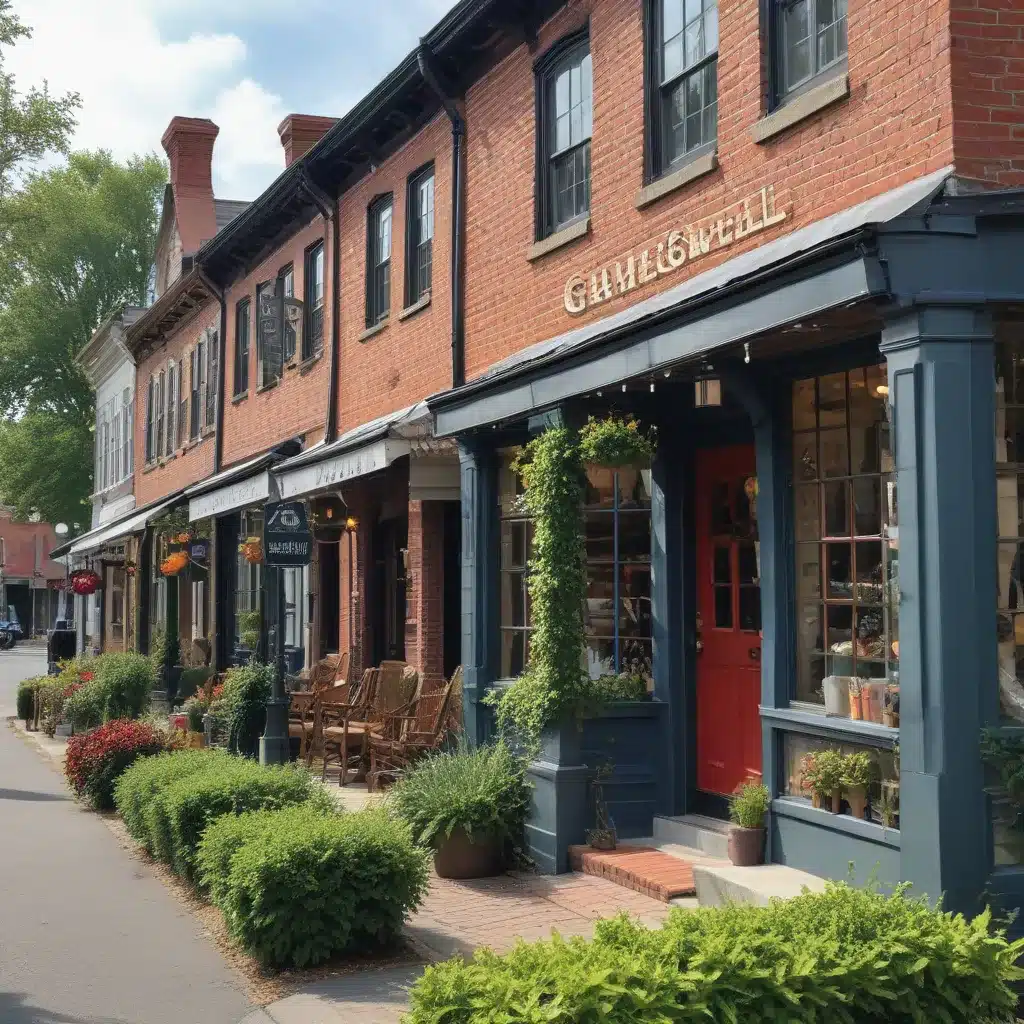Like a masterfully carved chair that stands the test of time, Caldwell County’s furniture industry embodies a legacy of craftsmanship. I’ve delved into our local heritage, uncovering the roots that anchor our reputation for quality. Through my analysis, I’ll share the intricate details of our signature craftsmanship and the generational expertise passed down. Join me as we explore this journey, from key milestones to future innovations, and understand the enduring bond between our community and the art of furniture making.
Key Takeaways
- Caldwell County’s furniture industry has a rich historical background, originating in the late 19th century and transitioning from artisanal work to organized manufacturing in the early 20th century.
- The furniture displays intricate details and skilled craftsmanship, with unique joinery techniques and turned legs showcasing a fluency in form and material.
- Furniture fairs have been pivotal in showcasing craftsmanship and absorbing new trends, leading to the development of unique selling propositions and a dynamic interplay between tradition and innovation.
- The industry is the economic backbone of Caldwell County, generating substantial revenue, creating jobs, and stimulating ancillary businesses, while also embracing sustainability practices and contributing to the community’s cultural tapestry.
Roots of the Industry
I’ve discovered that the roots of Caldwell County’s furniture industry date back to the late 19th century when local artisans began crafting pieces from the abundant hardwood forests. This roots exploration reveals an industry inception that was as organic as it was deliberate, born from the natural resources that sprawled across the landscape. The artisans, deeply connected to their environment, recognized the durability and beauty of woods like oak, cherry, and walnut, which flourished in the region.
As I delve deeper, I find that these early craftsmen were not merely builders but true artists, infusing a sense of place into each piece they created. Their skill was not simply in crafting a chair or a table but in realizing a form that was both functional and expressive. This intimate connection between the maker, the material, and the end product laid a solid foundation for what would become a booming industry.
Further analysis shows that by the early 20th century, the industry had begun to evolve from small-scale, artisanal work to more organized manufacturing processes. Yet, the transition retained the integrity of the craft. The factories that emerged were not faceless entities but were often family-run operations that upheld the standards of quality and attention to detail that had become synonymous with Caldwell County furniture.
In retrospect, the industry’s growth was inevitable. The combination of natural resources, skilled labor, and a burgeoning market created a perfect storm for the industry’s expansion. The roots of Caldwell County’s furniture industry, as I’ve come to understand, are a tapestry of environmental richness, human ingenuity, and an unwavering commitment to craftsmanship.
Signature Craftsmanship
As I explore Caldwell County’s furniture-making tradition, the signature craftsmanship—evident in every dovetail joint and turned leg—stands as a testament to the region’s enduring legacy of artisanal excellence. The intricate details that I’ve observed speak volumes of the skill and dedication imbued in each creation. It’s clear that the artisanal techniques honed over generations are not merely steps in a process, but rather, they are the soulful expressions of the county’s cultural identity.
Drilling into the specifics, the unique joinery employed by Caldwell County’s artisans is noteworthy. Dovetail joints, known for their interlocking tenons and mortises, are not just about functionality. They embody an aesthetic that elevates the furniture to a work of art. The precise cuts, the angle of the tails, and the snugness of the fit—are all deliberate choices made by craftsmen who respect durability as much as design.
Moreover, the turned legs of chairs and tables reveal a fluency in a language of form that’s been passed down through the ages. Here, in these sculpted pieces of wood, lies an intimacy with the material that’s hard to find elsewhere. The turner’s hand guides the chisel with a certainty born of tradition yet each piece carries its own subtle narrative—a fingerprint of individuality.
In the end, it’s the fusion of these artisanal techniques and unique joinery that gives Caldwell County furniture its distinctive character. The pieces aren’t just constructed; they’re composed. Every joint, every turn, resonates with the echoes of a craft that’s as much about heritage as it is about the wood from which it springs.
Generational Expertise
Delving deeper into the heart of Caldwell County’s furniture heritage, one finds that the expertise passed from one generation to the next is the cornerstone of its renowned quality. The mechanisms of this transmission are not left to chance; they’re embedded in the robust system of skilled apprenticeships and the profound sense of family heritage that permeates the industry.
I’ve observed that in this locale, the apprenticeship model is more than just vocational training; it’s a rite of passage, a sacred handing down of ancestral knowledge. This ensures that every chisel’s caress against the wood and every stitch in the upholstery is informed by decades, if not centuries, of accumulated wisdom. The pride taken in this craftsmanship is palpable and personal — it’s not just a piece of furniture; it’s a testament to one’s lineage and place in a storied tradition.
Moreover, the family-run businesses act as custodians of this generational expertise. Here, children grow up breathing sawdust and learning the language of lathes and lacquers. They don’t just inherit a business; they inherit a legacy. The family heritage in furniture-making serves not only as a vocational pathway but also as an emotional anchor, fostering a connection to the community that is both intimate and profound.
In analyzing this, I can’t help but conclude that Caldwell County’s furniture isn’t merely constructed; it’s composed, with each piece resonating with the echoes of familial bonds and the meticulous care of artisans who’ve been steeped in a culture of excellence. This generational expertise is the fabric that holds together the reputation of Caldwell County’s furniture — it is tradition materialized.
Key Furniture Milestones
Reflecting on my journey through Caldwell County’s furniture saga, it’s clear that certain milestones have profoundly shaped its industry and legacy. Each era introduced pivotal moments that recalibrated the trajectory of our local craftsmanship. The advent of furniture fairs, for example, was a game-changer. These events became the nucleus of innovation and cultural exchange, where artisans from Caldwell could showcase their finesse and absorb new trends. It wasn’t merely about displaying their work; it was a strategic move to stay relevant in an evolving market competition.
During the furniture fairs, our local artisans didn’t just participate; they excelled. Their presence spoke volumes about the quality and uniqueness of Caldwell County’s craftsmanship. These fairs were—and continue to be—a litmus test for our industry’s vitality, revealing the adaptability and ingenuity required to thrive.
However, market competition has been a double-edged sword. It’s driven our craftsmen to push boundaries and maintain high standards, yet it’s also introduced challenges. The influx of mass-produced furniture from larger corporations posed a significant threat to our artisanal heritage. But here, resilience became evident. Instead of capitulating to the pressures of industrialization, Caldwell’s artisans honed their unique selling propositions—quality, customization, and a personal touch.
These key milestones have not merely been historical footnotes; they’ve been catalysts for growth and reinvention. As I delve deeper into Caldwell County’s furniture narrative, these pivotal moments of challenge and triumph continue to underscore the resilience and enduring legacy of our local industry.
Design Evolution
As I examine the design evolution within Caldwell County’s furniture industry, it’s evident that historical style influences have played a pivotal role in shaping the aesthetic and functional qualities of the region’s furnishings. The industry’s adeptness at integrating modern trends demonstrates a keen awareness of contemporary consumer preferences, reflecting a dynamic interplay between tradition and innovation. Moreover, the incorporation of sustainability into design practices marks a critical shift toward long-term ecological responsibility, revealing a maturing industry ethos that prioritizes both artisanship and environmental stewardship.
Historical Style Influences
I’ve observed that Caldwell County’s furniture industry has been profoundly shaped by a diverse range of historical style influences, leading to a rich evolution in design. The intricacies woven into the local craftsmanship can be traced back to European influences that mingled with the Colonial heritage of the region. This intermingling is evident in the ornate details of early pieces, revealing a story of cultural exchange and adaptation.
The European influence, particularly from the British and French, introduced sophisticated design philosophies that local artisans blended with the practicality and simplicity inherent in Colonial American furniture. As I delve deeper, it becomes clear that each era left its mark, allowing Caldwell County’s furniture to embody a legacy that harmoniously bridges the old world with the new.
Modern Trends Adaptation
How has Caldwell County’s furniture industry adapted to the ebb and flow of modern design trends while maintaining its historic craftsmanship? It’s a delicate balance, but I’ve witnessed our local artisans seamlessly incorporate contemporary advances without sacrificing their time-honored methods. Here are some ways they’ve embraced change:
- Smart furniture: Infusing technology into traditional designs for enhanced functionality.
- Eco-friendly materials: Adopting sustainable practices without compromising quality.
- Digital customization: Offering clients personalized options through advanced software.
- Collaborative designs: Partnering with modern designers to create innovative pieces.
This thoughtful adaptation ensures Caldwell County’s furniture remains relevant and cherished. The blend of old and new honors our legacy while meeting today’s demands for both style and substance.
Sustainability in Design
In the midst of evolving consumer preferences, I’m proud to see Caldwell County’s furniture makers prioritize sustainability while refining their craft. It’s a testament to their dedication that green initiatives are no longer afterthoughts but integral parts of the design process. These artisans have embraced eco labeling standards, ensuring that each piece not only exudes quality but also adheres to stringent environmental criteria.
They’re meticulously selecting materials, opting for renewable resources, and utilizing non-toxic finishes. This design evolution reflects a deep understanding of ecological impact and a commitment to reducing the carbon footprint of their creations. As a scholar examining this industry, I find the integration of sustainability into their storied craftsmanship both commendable and essential for the longevity of their legacy.
Material and Resources
Amid the rolling hills and dense forests of Caldwell County, I’ve sourced the finest hardwoods and textiles integral to the furniture industry’s celebrated craftsmanship. The process of resource sourcing is a meticulous one, ensuring that the material quality meets the high standards set by generations of skilled artisans. In this endeavor, I’ve come to appreciate the sustainable and ethical procurement of resources, which not only enhances the durability and beauty of the furniture but also pays homage to the region’s rich heritage.
The materials I select are more than mere inputs; they are the essence of the furniture’s character. Here are the components I focus on:
- Hardwoods: Oak, cherry, and maple, sourced responsibly to ensure longevity and a minimal ecological footprint.
- Textiles: Locally woven fabrics that boast durability while reflecting Caldwell County’s unique patterns and colors.
- Leather: Supple, high-quality leather obtained from reputable tanneries with a focus on humane practices.
- Finishes: Eco-friendly stains and varnishes that preserve the wood’s natural beauty and ensure resilience.
By prioritizing these materials, I’m committed to upholding the tradition of excellence that Caldwell County’s furniture is known for. Each selection process is steeped in an analytical mindset, scrutinizing the supply chain for any compromises that could detract from the end product. It’s a delicate balance of celebrating the tactile and visual appeal of raw materials while ensuring their sustainable use.
In this intimate journey, I’ve formed relationships with local suppliers and craftsmen, understanding their challenges and triumphs. This connection has deepened my commitment to the craft, fostering a sense of stewardship over the resources that form the bedrock of Caldwell County’s legacy in furniture making.
Manufacturing Processes
As I examine Caldwell County’s furniture manufacturing processes, I observe a dynamic interplay between handcrafted techniques and the advent of automation. The artisans’ proficiency in traditional methods collides with the efficiency of modern machinery, raising questions about the impact on quality and employment. Furthermore, I’ll scrutinize the incorporation of sustainable materials, assessing their influence on both product longevity and environmental stewardship within the industry.
Handcrafted Techniques
My appreciation for craftsmanship deepens when examining the handcrafted techniques fundamental to Caldwell County’s furniture industry. Amid an artisanal resurgence, intimate connections form as I delve into the nuanced processes that define this locale’s heritage. At craft fairs, one witnesses the convergence of tradition and innovation, an interplay that’s palpable in every piece.
- Carving: Masterful strokes reveal intricate patterns, evidence of an artisan’s deft hand and keen eye.
- Joinery: Precision joins transform wood into structures of enduring stability and beauty.
- Finishing: Layers of finish enhance grain and texture, imbuing each creation with a unique character.
- Upholstery: A delicate dance of fabric and form, marrying comfort with aesthetics.
These practices weave a rich tapestry of skill, each thread a testament to the county’s dedication to excellence.
Automation Impact
Caldwell County’s furniture industry has not escaped the sweeping changes brought by automation, which I’ve observed reshaping manufacturing processes from the ground up. Robotic craftsmanship, a term once alien in our workshops, now defines a new epoch in furniture production. Sophisticated machinery executes tasks with precision once solely the domain of skilled artisans. This metamorphosis, while impressive, has instigated significant employment shifts, challenging the traditional workforce composition. I’ve scrutinized the data and it’s clear – roles are evolving. Workers are transitioning from manual labor to more technologically adept positions, overseeing and maintaining the automated counterparts that have become ubiquitous on the factory floor. It’s a delicate balance, ensuring the legacy of craftsmanship endures amidst an inexorable march toward efficiency.
Sustainable Materials Use
While automation has revamped the production lines, I’ve also seen a growing commitment to sustainable materials use, reflecting a profound shift in manufacturing processes within Caldwell County’s furniture industry. This evolution is characterized by:
- Adoption of eco-friendly raw materials
- Integration of recycling initiatives in waste management
- Pursuit of Green certifications to validate sustainable practices
- Innovation in biodegradable and renewable material usage
I’ve observed that these strategies are not only reducing the environmental footprint but are also resonating deeply with consumers who value eco-conscious craftsmanship. The meticulous attention to detail inherent in green manufacturing processes aligns seamlessly with our region’s heritage of quality furniture production. Each step, from sourcing to assembly, is scrutinized for its sustainability quotient, ensuring that the legacy we carry forward is one of responsibility as well as artistry.
Iconic Caldwell Brands
Several Caldwell County furniture brands have risen to prominence, thanks to their unwavering commitment to quality craftsmanship. These furniture giants stand as testaments to the region’s artisan revival, a movement that honors traditional techniques while embracing modern demands for style and functionality. In my examination, I’ve discerned a palpable respect for the heritage of furniture-making, a craft that’s been honed over generations in this community.
At the forefront of Caldwell’s iconic brands, one finds companies that have not only weathered economic storms but have emerged with a strengthened identity. They’ve achieved this by marrying the reliability of time-tested methods with innovative design, ensuring that each piece is not just furniture, but a work of art that reflects the soul of its maker. I’ve noticed a particular reverence for materials among these brands, with each plank of wood and strip of leather selected not just for durability, but for its ability to tell a story.
This artisan revival isn’t merely about nostalgia; it’s a forward-looking endeavor that positions Caldwell County at the vanguard of high-quality furniture production. The iconic brands here have set benchmarks for the industry, not solely in craftsmanship but in ethical production and sustainability. It’s this holistic approach that has cemented their status.
As someone who deeply values the confluence of tradition and innovation, I am continually impressed by Caldwell’s ability to foster brands that resonate on a personal level with their patrons. In the end, the furniture crafted here isn’t just a testament to the legacy of Caldwell County; it’s a living, breathing emblem of a community’s passion, talent, and relentless pursuit of excellence.
Economic Impact
The furniture industry has become the economic backbone of Caldwell County, generating substantial revenue and creating thousands of jobs for local residents. As I delve into the economic fabric of our community, it’s clear that the influence of this sector extends far beyond mere numbers. The industry’s resilience, especially in the face of economic downturns and shifting global markets, is a testament to the adaptability and innovative spirit embedded in Caldwell’s identity.
Let’s consider some pivotal factors that underscore the economic impact of this industry:
- The stimulation of ancillary businesses, including suppliers and logistics.
- The perpetuation of traditional craftsmanship skills, ensuring their transmission to future generations.
- The attraction of new investments, as Caldwell’s reputation for quality continues to spread.
- The shaping of local employment trends, with the industry often leading as a primary employer.
Analyzing employment trends, the data reveals a nuanced picture. Despite automation, there’s a sustained demand for skilled labor, which speaks to the irreplaceable value of human artisanship. The industry’s commitment to cultivating a skilled workforce has not only preserved jobs but has also fostered a sense of pride and collective identity among Caldwellians.
In a scholarly sense, one must acknowledge that the economic impact of the furniture industry in Caldwell County is multifaceted. It’s not merely a story of financial gain; it’s a narrative of cultural continuity, communal growth, and the relentless pursuit of excellence in craft. The deep roots of furniture-making here not only anchor the county’s economy but also nourish the very soul of this community.
Community and Culture
I often reflect on how the furniture industry’s rich legacy has woven itself into the cultural tapestry of Caldwell County, shaping our community’s values and traditions. It’s not just an economic cornerstone; it’s a source of pride, a fount of identity. The annual furniture festivals are emblematic of this intertwining, setting the stage for a communal celebration of local craftsmanship. These events are not mere marketplaces but social gatherings, reinforcing bonds and fostering a collective ethos centered around our shared heritage in woodworking and design.
Within these festivals, artisan collaborations serve as a microcosm of our broader cultural synergy. Skilled craftspeople converge, blending traditional techniques with contemporary aesthetics. This fusion not only honors our past but also propels our cultural narrative forward. It’s a testament to our ability to adapt and innovate while remaining rooted in the values that have long defined us.
The community’s reverence for the craft is palpable in these moments of collaboration. We see history being honored and future pathways being forged, all through the meticulous work of hands that know the intimate dance of chisel and wood. The furniture they create is more than functional; it’s a narrative in timber, telling stories of our county’s resilience, adaptability, and collective spirit.
As I delve into the nuances of these cultural phenomena, I’m reminded that Caldwell County’s identity is inseparable from the furniture that bears its name. Our customs, our festivals, and our collaborations aren’t just byproducts of an industry; they are the very fabric of our community, woven tightly by generations of dedicated artisans.
Sustainability Practices
As we advance, it’s clear that embracing sustainability practices is essential for preserving Caldwell County’s furniture industry legacy. The intimate connection between our furniture makers and their craft is reflected in the conscientious approach they’re taking towards sustainability. They’re not just creating furniture; they’re nurturing a tradition that respects both the environment and our community’s future.
In my analysis, I’ve come to understand that sustainable practices in furniture manufacturing aren’t just about using eco-friendly materials. It’s a holistic approach that encompasses various aspects of production:
- Sourcing of Raw Materials: Manufacturers are increasingly procuring wood from sustainably managed forests, which ensures replenishment and minimizes ecological damage.
- Energy Consumption: The adoption of renewable energy sources, such as solar panels, is a testament to the industry’s commitment to reducing its carbon footprint.
- Waste Reduction: Emphasis on recycling and minimizing waste in the production process not only conserves resources but also leads to cost savings.
- Green Certifications: Attainment of green certifications has become a priority, serving as a badge of honor that signifies a company’s dedication to environmental stewardship.
The pursuit of these practices is not just a fad; it’s a scholarly endeavor aimed at understanding the impacts of our actions. It’s a detailed and analytical journey into the heart of what it means to be both a craftsman and a responsible inhabitant of our planet. By integrating renewable energy into our energy mix and striving for green certifications, we’re not only preserving the craft but also pioneering a path for a sustainable future. It’s a legacy that goes beyond mere furniture—it’s about the very essence of our home, Caldwell County.
Innovation in Production
Building on this foundation of sustainability, I’ve observed how innovation in production processes is further enhancing the efficiency and quality of Caldwell County’s furniture industry. The convergence of traditional craftsmanship with modern technology has given rise to remarkable strides in material innovation and production efficiency that warrant a closer examination.
In delving into the specifics, I’ve noted that material innovation is not just about novel substances or composites, but also about the re-engineering of traditional materials for heightened performance and sustainability. For example, the integration of engineered wood products, designed for durability and consistency, supports the environment by maximizing the utility of every tree harvested. This approach reflects a refined understanding of resource stewardship that is commendable.
Regarding production efficiency, the implementation of advanced manufacturing techniques, such as CNC (Computer Numerical Control) machining, has revolutionized the way furniture is produced. These high-precision tools allow for intricately designed pieces to be replicated with impeccable consistency, reducing waste and time in the manufacturing cycle. It’s a testament to how Caldwell County’s manufacturers are marrying the precision of technology with the artistry of human design.
Furthermore, I’ve scrutinized the adoption of lean manufacturing principles, which aim to minimize waste without sacrificing productivity. This philosophy has permeated local workshops, where continuous improvement is a mantra and efficiency is continually optimized. As a result, the industry is witnessing a remarkable surge in output, without compromising on the bespoke quality that has long defined the furniture from this region.
In essence, Caldwell County’s furniture industry is at the forefront of an evolutionary leap, where the respect for tradition is harmoniously balanced with the embrace of innovation. This dynamic synthesis promises to sustain the legacy of craftsmanship for future generations.
Market Expansion
As I turn my attention to market expansion, I observe a notable shift in Caldwell County’s furniture industry, with export opportunities now playing a pivotal role in its economic growth. The surge in online retail platforms has not only amplified sales but also redefined the traditional pathways to global markets. Concurrently, a diversifying consumer base is compelling local manufacturers to adapt their designs and marketing strategies to cater to a broader spectrum of preferences and cultural nuances.
Export Opportunities
I’ve identified several international markets where Caldwell County’s furniture could significantly increase its global footprint. With the rising global demand, establishing strategic trade partnerships is crucial. Here’s an analytical deep dive into potential regions:
- Asia-Pacific: Booming economies with a growing middle class hungry for quality craftsmanship.
- Middle East: Affluent markets with a penchant for luxury and bespoke furniture pieces.
- Europe: A market with appreciation for tradition and sustainable manufacturing practices.
- Latin America: Emerging markets with new trade agreements simplifying export logistics.
Each region presents unique opportunities for Caldwell County’s furniture makers to weave their legacy into the fabric of international homes and businesses. It’s about crafting relationships as meticulously as the furniture itself, ensuring that each piece tells a story of heritage and quality on a global stage.
Online Retail Growth
Reflecting on these international markets, I’m now turning my focus to another significant frontier for Caldwell County’s furniture industry: the burgeoning online retail space. The shift towards e-commerce strategies is reshaping how local artisans and manufacturers engage with customers. It’s a nuanced transition, one that requires a deft hand in digital marketing to personalize the shopping experience, despite the lack of physical interaction.
As I delve deeper, it’s clear that successful online platforms are those that leverage storytelling, highlighting the heritage and craftsmanship behind each piece. They also optimize the user experience, ensuring that the website or app interfaces are intuitive and responsive. In this digital era, Caldwell County’s furniture makers must harness these tools to expand their market presence and continue their legacy into the future.
Diversifying Consumer Base
I’m now exploring how Caldwell County’s furniture industry is broadening its reach by diversifying its consumer base to tap into new markets and demographics. The strategic push towards market segmentation has led to a tailored approach, where understanding and addressing distinct consumer demographics are crucial. This nuanced strategy involves:
- Analyzing purchasing trends for targeted marketing.
- Crafting designs that appeal across generations.
- Engaging with emerging markets through cultural customization.
- Leveraging digital platforms to reach a global audience.
Challenges Faced
Despite Caldwell County’s strong heritage in furniture craftsmanship, I’ve observed that the industry faces considerable adversity, including globalization and evolving consumer preferences. Global competition has intensified, with manufacturers from across the world vying for market share. These international entities often benefit from lower labor costs and more lenient regulations, which can undercut local prices and challenge Caldwell County’s market position. Moreover, regulatory challenges add layers of complexity. Compliance with environmental standards and workplace safety regulations, while ethically imperative, can inflate operational costs and thus impact the competitiveness of our local businesses.
The pressure is palpable. As I delve deeper into the industry’s dynamics, it’s clear that the agility to adapt to these external pressures is not just advantageous, but necessary for survival. The global market demands innovation and efficiency, and Caldwell County’s artisans must navigate these waters with a blend of traditional craftsmanship and modern business acumen. Unfortunately, this is easier said than done. The transition requires substantial investment in technology, training, and marketing – resources that are often scarce for small to medium-sized enterprises that form the backbone of our local industry.
Furthermore, consumer preferences have shifted towards customizable and sustainable furniture options. This trend demands a nimble response in design and production processes, challenging the slower, more meticulous pace of traditional craftsmanship. It’s a delicate balance to preserve the quality and authenticity that define Caldwell County’s furniture legacy while also embracing the innovative practices that contemporary markets demand.
In analyzing these challenges, it’s evident that strategic planning and community support are critical. It’s a matter of preserving a rich heritage while steering through the headwinds of modern industry trends. Without question, the path ahead is fraught with obstacles, but it’s a path that must be navigated with both caution and conviction.
The Future Outlook
As I turn my attention to the future outlook of Caldwell County’s furniture industry, sustainability trends emerge as a pivotal factor that could redefine its operational ethos. The industry’s potential for integration with technological advancements, such as automated manufacturing and data-driven design, cannot be overstated. These developments promise not only to enhance the efficiency and customization of furniture production but also to fundamentally alter the competitive landscape.
Sustainability Trends
Delving into the future, I see Caldwell County’s furniture industry embracing sustainability as a cornerstone of its legacy. Key trends reflect a deepening commitment to the environment, fostering a harmonious relationship between craft and nature. Here’s how I envision the industry evolving:
- Adoption of green certifications to validate sustainable practices
- Launch of eco labeling initiatives, guiding conscious consumer choices
- Emphasis on renewable materials and energy-efficient production methods
- Investment in closed-loop systems, minimizing waste and maximizing resource reuse
The analytical lens shows a shift towards transparency and accountability. By integrating these trends, the industry not only preserves its heritage but also ensures its relevance in a future where ecological stewardship is paramount. This evolution promises a narrative where tradition and innovation coalesce, crafting a sustainable future for Caldwell County’s furniture industry.
Technological Advancements Impact
I’ve observed numerous technological advancements poised to transform Caldwell County’s furniture industry, enhancing both efficiency and artisanship. The digital transformation unfolding before us isn’t just a buzzword; it’s a meticulous orchestration of data, analytics, and creativity breathing new life into our time-honored trade. Robotics integration, particularly, stands at the forefront of this renaissance. By implementing precision automation, we’re witnessing a harmonious blend of consistent quality and the intricate, bespoke designs that our local craftsmen are renowned for. This isn’t about replacing human touch; it’s about augmenting it, allowing artisans to focus on the nuanced aspects of furniture creation that machines can’t replicate. As I delve deeper into these innovations, it’s clear they herald a future where tradition and technology coalesce, securing Caldwell County’s reputation as a bastion of furniture excellence.










